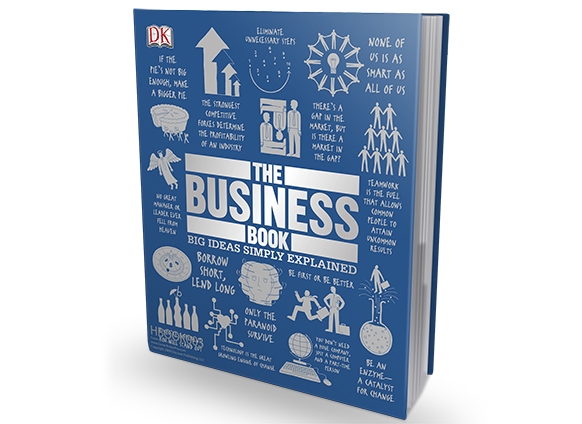Make it easier to do the right thing and much harder to do the wrong thing. Create an ethical culture. This could be done from top down. A code of conduct is important. The culture must foster people to do the right thing. Groupthink must be tackled. Customers gravitate towards companies with good business ethics.
Market Management (Successful Selling). Knowing your customer and their purchase history is the most important. The marketer must be aware of changing tastes, technology and politics. Product/service is the most important element of the marketing mix. The use of the Ansoff Matrix is possible. Make the brand synonymous with the set of unique product qualities. Branding allows the firm to charge a premium. Marketing enables your products to be pushed out. Social media can be the tool. Staying on message. It is vital to stick to a consistent message. Understand the role of ethics in the organization.
Marketing is far too important to leave to the marketing department. Some marketing programmes use statistics and mathematical models. Gathering data for modelling is important. Marketing must be communicated to the rest of the department. Learn to simulate product tests and input variations. Marketing is all about producing results. It must be rational.
Know the customer so well that the product fits them and sells itself – Understanding the market. Learn to understand the business environment. Understand and assess the broad market environment. Develop products and services to meet existing demand. Businesses must be centered on the customer in order to grow. Shareholders do better when the firm puts the customer first. The market is more fragmented in recent times. Price cutting can divide customers. Market research is important. Both qualitative and quantitative research can be conducted. Psychological profiling can be used. Amazon engages in customer relationship management (CRM). CRM relies on individual marketing based on customer’s preferences. Neuromarketing tests how individual’s brainwaves changes when exposed to a certain campaign. Even though you listen to customers, it is still important to make the leap to figure out what the customer needs.
Attention, Interest, Desire, Action. This is the AIDA model. This is the foundation of marketing and advertising. The fourth step is call to action. Provide a list of benefits to the consumer. Make it easy for customer to perform the action. Film-makers create desire for customers in their trailers. Marketers need new ways to perceive customer journey. Say AIDA to yourself.
Marketing Myopia. Focus on the future market. Focusing on the current market might lead to trouble in future. Customers taste and circumstances change over time. Grow or die after a while. Growth is never certain. Learn to treat marketing seriously. Far-sighted marketing is by far more favourable than near-sighted marketing.
The cash cow is the beating heart of the organization – Product Portfolio. This refers to a dependable source of revenue. It often doesn’t require much cash outlay to grow. Star and new products need to be introduced once in a while. BCG is important. The product portfolio is the total mix of products offered by an organization. One can use the BCG matrix to assess profitability of the product mix. There are dogs, question marks, cows and stars. Nestle has a great product mix and knows how to mix its products well.
Expanding away from your core has risks; diversification doubles them – Ansoff’s matrix. There are four possible strategies: 1) market penetration; 2) market development; 3) product development; 4) diversification. Developing new products and seeking new markets can increase your risk. Tesco showed that there is risk in diversification.
If you are different, you will stand out. Learn to create a brand. Idea and elements help to form the brand. Brands will be successful if they are different from their competitors. Dyson’s vacuum cleaners is an example of a good and strong brand. Brand loyalty is established when members like to be around others who have the same brand. A successful brand is timeless. IKEA wants to create a better life for all. Starbucks started the ‘third place’ concept. There are 5 key stages to building customer loyalty. The Body Shop is associated with social responsibility. Starbucks is instantly recognizable globally.
There is only one boss: The customer. Make the customers love you. Customers like good service and food quality. Walmart is associated with low prices always. If you can exceed customer’s expectations, they will always return. The iPhone can command a premium. Learn to cultivate customer loyalty through loyalty cards etc.
Whitewashing, but with a green brush. This movement started in the 1990s. Do companies need to take fundamental reforms? Some companies see a commercial advantage in going green.
People want to believe in something beyond maximizing profits – The appeal of ethics. Business ethics is important. People like services which go beyond profits. An example are NGOs.
Everybody likes something extra for nothing – Promotions and Incentives. This is known as sales promotion. However, the effects of promotion might only last a while.
In good times people want to advertise; in bad times, they have to. Advertising efforts must be on-going. Customers may forget about you if you stop advertising altogether. Effective advertising requires commitment and should not be neglected.
Make your thinking as funny as possible. Generate buzz. Word of mouth marketing is getting more important. It is the most effective form of marketing. Guerrilla marketing and viral marketing help to generate buzz.
E-Commerce is Becoming Mobile Commerce. Tap-to-pay is one of the newer technologies. Cell phones are the informal banking system.
Trying to predict the future is like driving with no lights looking out of the back window. Forecasting sales is crucial. Both qualitative and quantitative elements must be used. However, it is never 100% accurate as there are unforeseen elements that are present.
4Ps – Product, Place, Price, Promotion. This is a theoretical framework. The marketing mix must take into account external forces too. The 4Ps are internal factors only. Ultimately, customers must accept the price that is proposed. Sometimes, customers are driven by emotional needs. The 4Ps can be put into practice easily. Brands like Zara embrace the 4P concept.
Delivering the goods – Production and Post-production. Every part of the production must be examined carefully. One way to lower cost is to reduce waste. This is known as the ‘lean production’ method. Toyota uses a JIT production system. Many companies aim for cost reduction strategies. Innovation can come from any part of the business. Some companies employ the concept of ‘open innovation’ and get ideas from all sources. Big data is becoming more prominent. Such data can be analysed to yield insights. Word of mouth marketing is excellent. Companies need to make the best use of time and resources.
See how much, not how little, you can give for a dollar. Learn to maximize customer benefits. Offer more for less. Give customers a bang for their buck. Low prices can indeed attract a lot of customers. However, low prices must be associated with products of decent quality as well.
Costs do not exist to be calculated, costs exist to be reduced (Lean Production). Waste should be eliminated. There are 7 types of waste. They are 1) overproduction; 2) inventory waste; 3) movement; 4) waiting time; 5) transportation; 6) overprocessing; 7) production of defective items. Holding goods incurs storage costs and should be avoided. Toyota developed the TPS. Some companies only manufacturers when they receive a customer’s order. This is known as JIT system. Muri, Muda, Mura are all areas to avoid. To do JIT, the production cycle must be shortened. Work designs and processes must be designed. Bottlenecks should be eliminated.
If the pie’s not big enough, make a bigger pie (Fulfilling demand). Some companies anticipate stock during peak periods or they keep WIP at times. The aim is to keep enough stock to meet demand and also to minimize inventory holding costs. Some level of buffer stock might be necessary.
Eliminate unnecessary steps (simplify processes). One way to generate profits is to lower production costs and streamline processes. Ford produced a standardised car. They also produced standardised and identical models to increase speed of production. Employees were told to specialize in one aspect of production. Dell created custom-made customers and sold directly to the customer to cut out profit from the middle man.
Every gain through the elimination of waste is gold in the mine (Juran’s Production Ideal). Waste undermines profit and should be eliminated. One should strive for improved productivity. Lower costs can be translated to lower prices of products and cost savings to the customer. More money can be reinvested into R&D.
Machines, Facilities, and people should work together to add value – Kaizen. Kaizen is all about productivity. This is a continuous process. Toyota applied it in the 1950s. Every worker should do their job but also look for ways to improve the way things are being done. The greatest resource are the employees. Kaizen focuses on ‘quality circles’. Japanese companies do not give cash bonuses for giving suggestions. Workers must feel a sense of pride when giving suggestions. Innovation should be a part of life. Empowerment is very important as ideas from the ground can be implemented immediately. Mutual respect is important. Develop a healthy relationship with your employees. BPR requires high capital outlay but is often done infrequently. Increased productivity achieved by kaizen is often cheaper. In top down organizations, kaizen doesn’t work. Kaizen is mainly a bottoms up concept.
Learning and innovation go hand in hand. Learn to apply and test ideas. R&D should be done frequently and it should lead to a production of more products. Technical breakthroughs might be rare.
Your most unhappy customers are your greatest source of learning – Feedback and innovation. Should a company be in sole control of their innovation? Sometimes, shared innovation is possible. Your customers are the greatest source of learning. They might submit feedback to you. Companies can learn from crowdsourcing movements. Wikipedia started off as a crowd-funding project.
Technology is the great growling engine of change – the right technology. IT can boost productivity and reliability. However, not all IT projects may turn out to be successful. A new project must have a shared vision for it to work.
Without ‘big data’, you are blind and deaf and in the middle of a highway – benefitting from big data. Data must be analysed. Big data can be used for market research purposes. TiVo has used big data to create a revenue stream. Netflix has used big data to drive product development.
Put the product in the customer’s hands – it will speak for itself. Sometimes, promotion aren’t all that necessary. The product quality will attract customers already. Quality products help inspire and gain trust. Businesses have different features in their products. Estee Lauder is a brand associated with quality. Quality products attracts customer loyalty. Businesses can add value by creating quality products.
The desire to own something a little better, a little sooner than necessary. Nowadays, products are more durable. Newer versions of products have new features. This entices the old customers to want to purchase them again. Car manufacturers use different tactics to ensure customers to upgrade.
Time is money – time-based management. Time has a monetary value. Multidisciplinary teams can work on different aspects of design simultaneously. This reduces cost design. There is no need for a linear approach. Time-based management is increasingly important. A project without a critical path is like a ship without a rudder.


